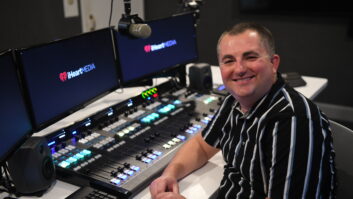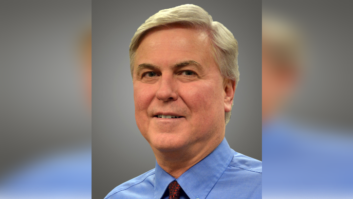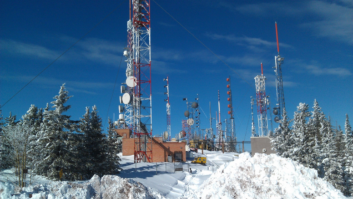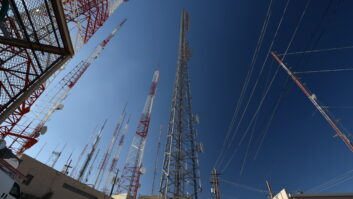
Gary Lawrence and Bill Hammett are Eagle Scouts; both also have sons working on attaining that Boy Scout rank.
That’s one area where their interests overlap. Another is business; a third is communications engineering.
About six years ago, the men sat in a hotel lobby in downtown San Francisco not far from the original offices of Hammett and Edison, the consulting engineering company run by Hammett and founded by his late father Robert, and began talking about how they might work together more closely.
That conversation led ultimately to an agreement this summer: Lawrence and his firm Pacific Venture Investments would acquire controlling interest in Hammett & Edison.
The transaction puts a renewed spotlight on one of the oldest such firms and its new polymath owner Gary Lawrence, an inventor, author, lawyer and entrepreneur.
‘Continuity’
I asked Hammett if the sale was an emotional one, but he called it a pleasant decision. Little is changing about the practice day to day; he stays on as senior VP and retains an equity position.
“Ownership by Pacific Ventures provides continuity and security, if something should happen to me, and it promises to expand our opportunities as well,” he told me. “The ownership change should not impact our clients or staff, as our operations continue just as they were,” but with expanded resources and reach.
Hammett & Edison works with wireless and broadcast companies doing frequency allocation, transmission site selection, RF exposure certification, acoustic noise evaluation and antenna design.
The company was founded by Robert Hammett in 1952. Edward Edison became a partner in 1956. The principals, both professional engineers, retired in 1988 and later were honored with the NAB Radio Engineering Achievement Award.

William F. Hammett In 58 years the firm has worked with hundreds of radio and TV station owners as well as clients as big as the Kingdom of Saudi Arabia. It recently prepared coverage maps for the FCC of the new DTV stations nationwide ahead of the NTSC shutdown. It audited public FM and TV translators for the Corporation of Public Broadcasting in anticipation of digital conversion.
It has diplexed two 50 kW AM stations in Seattle, done extensive field testing for one of the early DTV proponents and developed unique capabilities for on-tower RF exposure assessments. Now based in Sonoma with an office in Dallas, it has a staff of 11 engineers, including five PEs, and eight support personnel.
‘Spark innovation’
For Gary Lawrence, this acquisition is a strategic one, allowing him to expand his media and technology business holdings.
Commending Hammett and his team for “outstanding long years of achievement and technical accomplishment,” Lawrence — who’d worked with H&E as a client and venture partner — also sees an opportunity to work with Hammett to bring a sense of renewal and fresh energy to the relatively staid field of broadcast and wireless engineering services.
He talks in terms of modernizing, expanding the company’s geographic presence and being a “comprehensive services provider … across the entire range of broadcast and wireless network and spectrum development and management.”
His background is an interesting mix of experience in law, business and tech. For 18 years Lawrence worked at Akin Gump Strauss Hauer and Feld, eventually becoming a senior partner and heading its technology transactions practice.
“In the early ’90s I started doing work with a variety of broadcast companies at the law firm, among them Clear Channel, ABC, top-flight people in the industry. You end up doing one thing in one industry sector, and it leads to another, and you start going to the trade shows; and before you know it you’re deploying capital.”
He was involved in proposals known as the streamlining rulemaking, which sought to change how the FCC treated the relocation, upgrade or improvement of radio signals, primarily FMs. The goal was to benefit smaller and minority owners, who tend to have more impaired or “rim-shot” signals.
“Wisely, the commission granted the preponderance of those requests, and made it easier in certain circumstances for those with impaired signals to improve them.”
His interest in sparking innovation also pushed him in 1996 to start working with Ron Unkefer, a technology investor from Silicon Valley and founder of the Good Guys consumer electronics chain. The two eventually launched First Broadcasting Investments LP in Dallas, investing in spectrum enhancement opportunities including software for analyzing over-the-air signals with an eye to improving them, and owning as many as 20 radio stations across the country.
“A lot of engineering firms — and I am proud to say that H&E is not among them — use off-the-shelf, last-generation software for analyzing signal propagation, wireless systems, AM, FM, setting up antenna arrays, you name it.
“Having been a tech investor since the early 1990s and being around the software business, Ron Unkefer and I saw the opportunity for technical innovation in all these areas. That led to a host of patents for the SpectraMax system.” It is a software platform used to analyze signals and maximize network deployment.

Gary M. Lawrence Unkefer is now retired but Lawrence continues to expand his holdings looking for ways to make the most out of his financial resources and his interest in innovation.
With him as owner, Hammett & Edison — which already had a portfolio of software and its own development expertise — will have access to Lawrence’s software expertise, which includes patents like “Systems and Methods for Determining Feasibility of Communication Spectrum Maximization.” He and Hammett are working to “leverage all those assets” and exploring joint ventures and acquisition opportunities involving other wireless services and software companies, he said.
‘Maximum efficiency’
Lawrence is a salesman, as befits any entrepreneur, and eloquent on the benefits of intelligent consulting engineering.
“I continue to be staggered by the lack of attention broadcast and wireless companies give to ensuring the maximum efficiency, quality and reach of their network deployments.
“You’d be amazed at how many broadcasters and wireless operators think, ‘Well, I’ll order off-the-shelf software, I’ll have my technical staff take look at it and we’re done.’ The best thing any broadcast or wireless company could do is to call Bill Hammett and ask him to do an entire analysis of their towers, transmission systems and technical facilities to determine if their current network deployment is sufficiently robust, safe and effective.
“Companies tend to spend a lot of time on their business operations but often marginalize the technical side,” he continued. “The real opportunity is for companies to wake up to the fact they have valuable technical assets — wireless distribution networks or broadcast — and pay a lot more attention to how to develop that core foundation of their businesses.”
This, he says, is not only a matter of new towers or licenses.
“Let’s assume I’m a broadcaster or a wireless network operator in or near a major metropolitan area. Over time, metro areas grow, populations shift.” Commercial activity in one geographical area recedes and picks up in another.
“American cities are very organic; things change in a five-year, much less 10-year, period. You see dramatic shifts in signal coverage, population, quality of transmission.
“It’s not just that ‘I need a new broadcast license or a new tower’; it’s that I need to think about maximizing the quality and reach of my signals and networks.
“More technical efficiency means more and better broadcast and wireless for everyone. The smartest thing I could do is hire an expert that combines the FCC side and the technical side and can tell me, ‘Well the Hispanic population has shifted … With adjustments to your location, power level, your FCC classification or an accommodation to a nearby signal, you can pick up 10 percent additional coverage of your targeted market.’” Or a wireless company might decide that growing demand on the network is straining its entire system.
Addressing those issues intelligently creates value, which is where he wants Hammett and Edison to come in. I’ll be interested to see how H&E evolves with Lawrence as chairman and CEO.
One of the obligations of the Eagle Scout is to be cheerful. In our conversation I found Gary Lawrence to have a positive outlook about our business.
“Broadcast is an addictive industry,” he said.
“Where I get refreshed is at the trade shows. I was sitting at NAB this year with Randy Michaels in the lobby of the hotel; we sat for two hours sharing war stories and talking about the future. I can’t tell you how many people stopped by.
“I left feeling refreshed and reminded that there’s a cadre of people who know each other, are passionate and smart, and aren’t going away. Innovation is just going to take us to new and more exciting places.”












